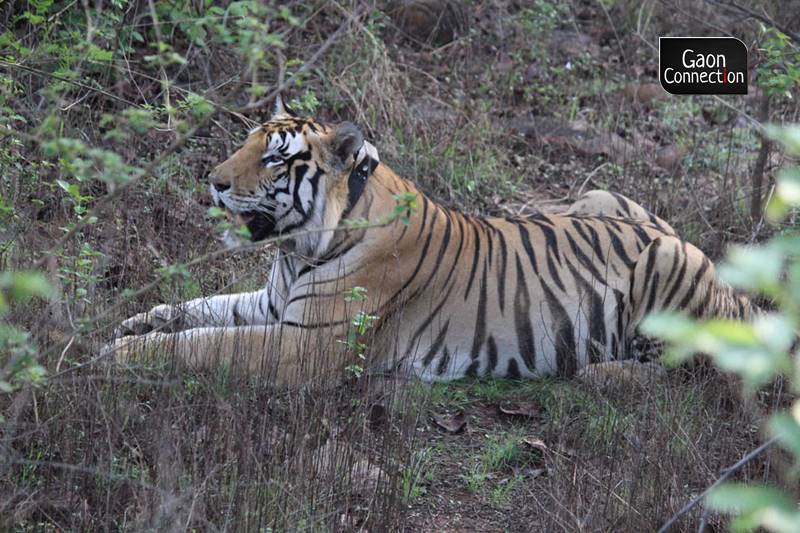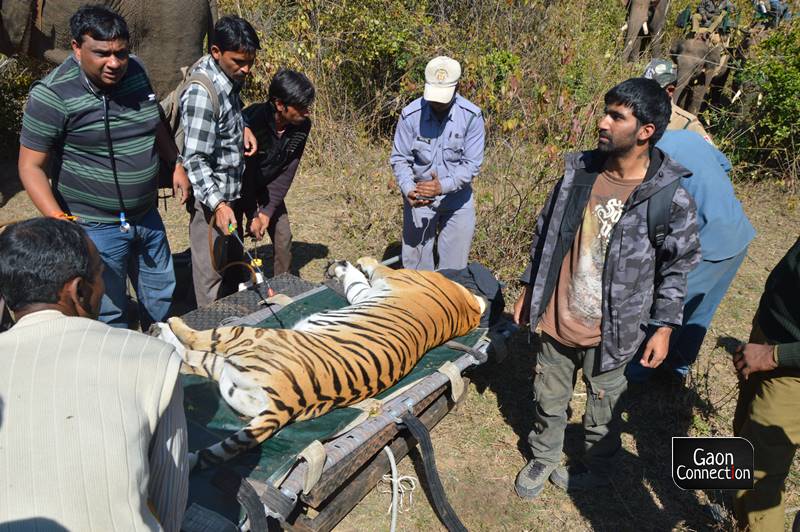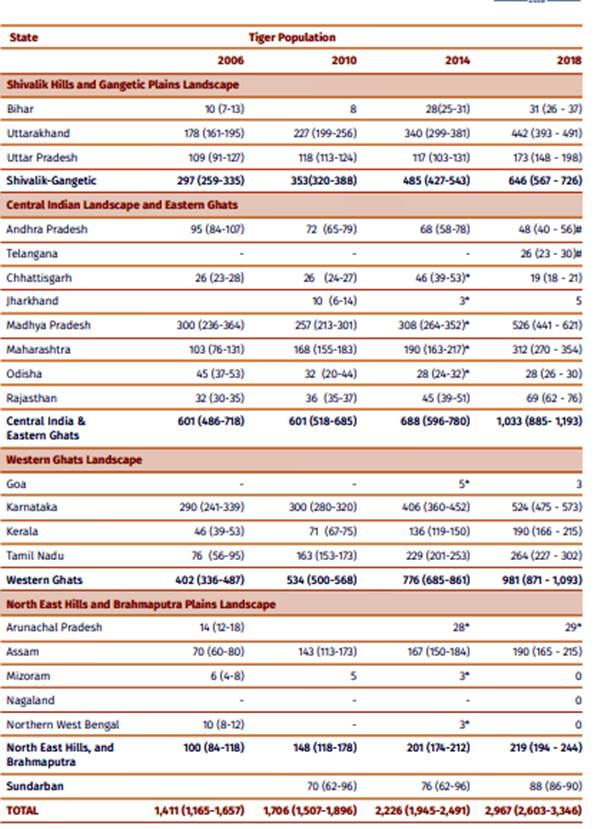Should tigers in forest reserves be treated for their wounds — or not?
A viral photograph of an injured tiger in Madhya Pradesh’s Panna Tiger Reserve has set off a debate on should the big cats, who get injured in the jungle due to natural reasons of territorial rivalries, be offered medical treatment, or left for Nature to take its own course?


Tourists and wildlife enthusiasts lament the lack of medical attention provided to the tigers in the jungle. Photos by arrangement
Panna, Madhya Pradesh
When a six-year-old tiger named P-243 was photographed by some tourists at Madhya Pradesh’s Panna Tiger Reserve about two weeks ago, it was revealed that the big cat was wounded in its head. The photograph, which went viral on social media, attracted criticism from a section of people blaming the ‘lack of medical care for wild animals’ and a demand for the treatment of the injured big cat.
This recent image of P-243 has raised a debate around ‘treatment’ of wild animals in the jungle – should these wild cats be offered medical treatment, or should Nature take its own course?
In the past seven years, the tiger population in Madhya Pradesh, which has six tiger reserves and a total tiger population of 526 has been on the rise. In 2014, the tiger population in the state was 308.
But the rising population of the big cats in the forests also has its challenges, not only for the tigers but also for the conservators.

The rise in the number of tigers competing for their territory often leads to injuries, sometimes grave. But, tourists and wildlife enthusiasts lament the lack of medical attention provided to the tigers in the jungle.
Also Read: Tiger Dad wins custody of his cubs at Panna Tiger Reserve
“It’s the way it is. Survival of the fittest. We need to understand that once the tigers are in the wild, we cannot treat them like we do in a zoo,” Panna Tiger Reserve’s area manager Uttam Kumar Sharma told Gaon Connection.
“If we provide medical aid to the wounded tigers, it will stabilise the population but after a while when the forest area gets overpopulated, these wild animals will begin to slip out of the jungles and venture towards human settlements,” Sharma added.
He further explained that if tigers begin to search for areas outside the forests, not only would it be dangerous for humans but it would also be risky for the tigers themselves.
“Human-animal conflict often leads to a certain death for the tiger if not the human,” Panna’s area manager pointed out.
A spatial crisis
Panna Tiger Reserve is spread across 1,598 square kilometres in central India and is home to about 70 tigers. The area manager Sharma told Gaon Connection that a forest area can accommodate a certain number of tigers within its limits. Ideally, a male tiger needs a minimum 40 square kilometers (sq.m) of forest land if the area has abundance of water and prey but it is far more and can exceed upto 100 sq.m
“The increase in population is good. But we also need more forest area for the rising population,” Sharma said.

“Providing medical treatment for tigers who have sustained injuries while hunting or combating themselves would be like disturbing nature’s way of balancing itself,” he added.
However, in contrast to the conservator’s views, animal experts believe that since the tigers are not able to live in their natural habitat, their injuries should be looked after by the forest officials.
Also Read: Even tigers get lonely, like RBT38 did, and head back to Ranthambore
“At the time of India’s independence, there were 40,000 tigers in 1947 (at present there are about 3,000). But in those days, the forests in India were connected with each other as a result of which tigers had their corridors intact and movement was easy. But now, there are only pockets of forests left,” Shyamendra Singh Binni Raja, former member of the Madhya Pradesh Wildlife Board, told Gaon Connection.
“Since the tigers are unable to move freely in an area, which they are naturally accustomed to, their injuries should be looked after,” Raja added.
What do official guidelines say?
The National Tiger Conservation Authority (NTCA) maintains guidelines on the management of tigers in the forest reserves.

“The tiger reserves/protected areas/forest habitats, having resident wild carnivores like tiger, need to be managed with minimum human intervention, with an overarching aim towards protection to foster welfare factors in a habitat, for the natural prey-predator balance and intra and interspecific interactions to operate,” the guidelines titled Standard Operating Procedures and Tiger Safari Guidelines mentioned in November, 2019.
Also Read: Heera and Panna, the inseparable tiger siblings of Panna Tiger Reserve, part ways
As stated by the forest area manager of the Panna Tiger Reserve, the guidelines also mention ‘survival of fittest’ through natural elimination of the aged/weaker individuals from a population.
“Therefore, it is not advisable to intervene in this natural process through artificial feeding of aged/incapacitated/injured wild tigers, which would amount to interference with their social land tenure dynamics and intra-specific interactions. Further, such practices may also lead to habituation of wild tigers which may lead to human-wildlife interface problems like livestock or human depredation,” the NTCA stated in its guidelines.

It also mentioned that the artificial feeding of old/incapacitated wild tigers to ensure their longevity goes against the basic tenets of ‘in-situ’ wildlife conservation and hence should not be done.
“Only in extreme situations, where an old/injured tiger may create human-tiger interface problems leading to livestock/human depredation, such tigers should be rehabilitated in a recognized zoo,” NTCA stated.
With the passage of time…
Panna Tiger Reserve which is spread across 1,598 square kilometres has treated injured tigers in the past. But that was when the number of tigers was abysmally low.
In 2009, the reserve ran out of tigers and a rehabilitation program was launched to regain the population of tigers.
“During those days, not only were the tigers monitored but their injuries were also treated urgently. But now, the number of tigers is high enough for nature to take care of the population,” Panna Tiger Reserve’s forest veterinarian Sanjeev Kumar Gupta told Gaon Connection.
“I assure you that the wounded tiger P-243 is also being monitored closely but so far there hasn’t been any medical intervention,” he added.
Meanwhile, noted tiger expert and author of ‘The Rise and Fall of the Emerald Tigress’, conservation biologist Raghu Chundawat told Gaon Connection that the tigers’ wounds heal quite fast.
“A tiger’s healing system is very efficient. Small wounds generally heal on their own without the need for medical treatment. But treatment is needed for body parts that the tiger cannot reach by its arms. Hence, a tiger tries its best to avoid injury on its back as its arms cannot reach its back,” Chundawat said.
“The wound location on P-234 is on its head. Its arms can easily reach the head and can swap flies off it. Chances of infections are less and there are no maggots seen in it so far,” he added.

